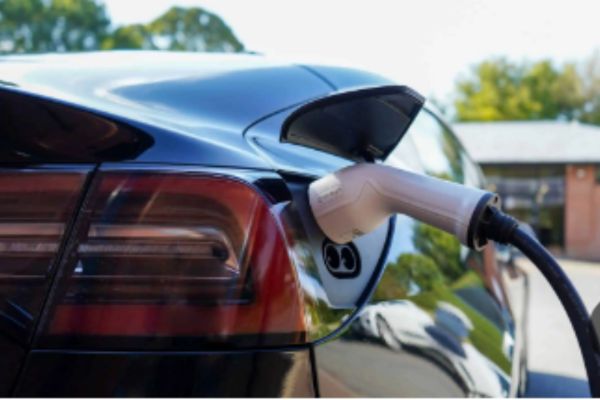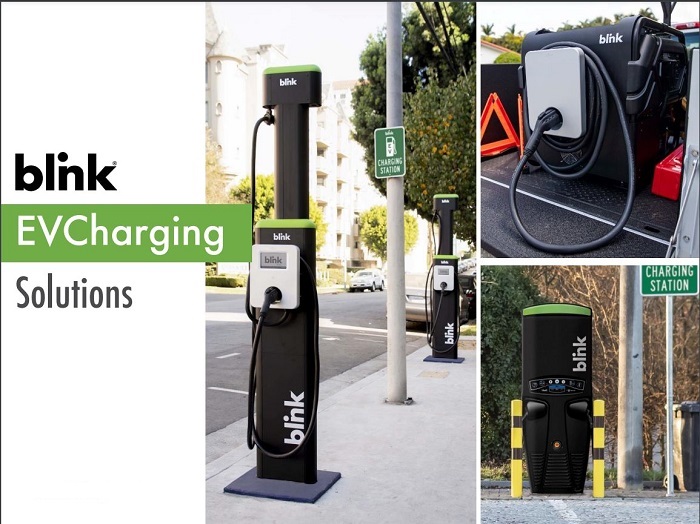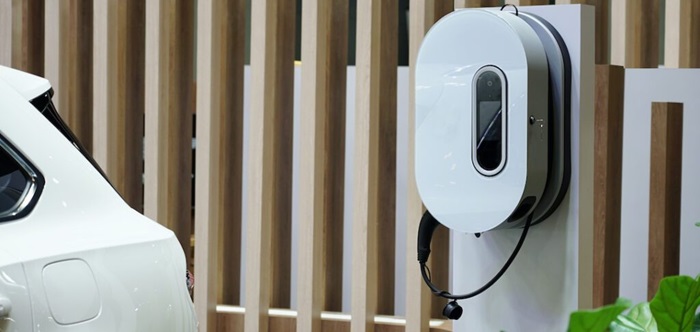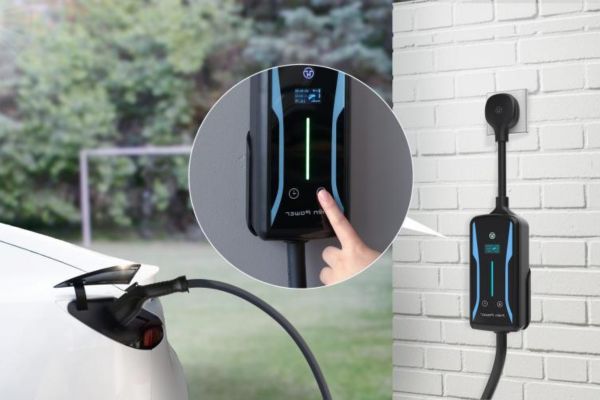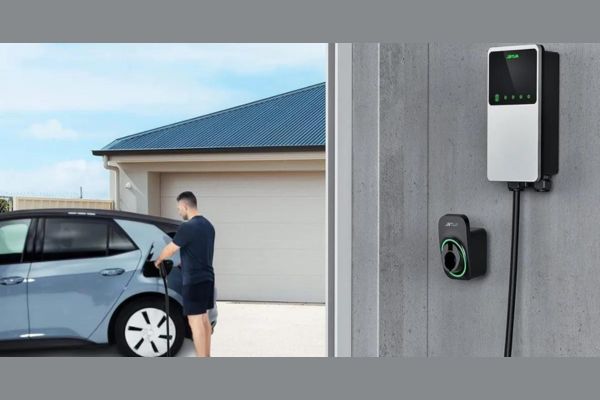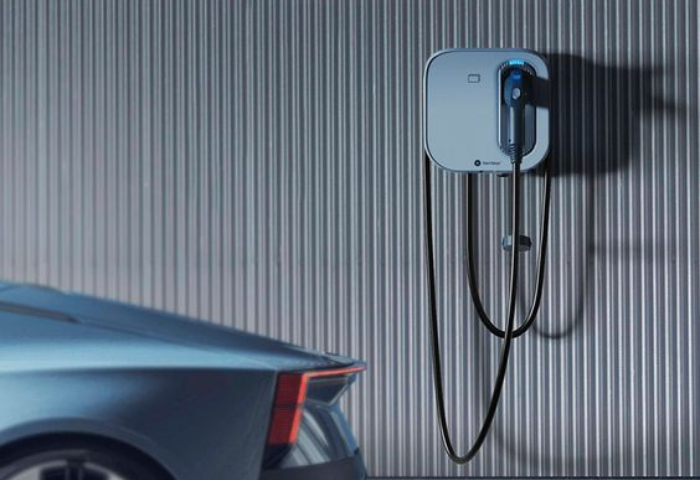The Best Home Smart EV Chargers on the Market: Detailed Reviews and Comparisons
Choosing the best home smart EV charger is crucial for any electric vehicle owner looking to maximize convenience and efficiency. These sophisticated devices not only streamline the charging process but also integrate seamlessly with home automation systems, allowing for remote management and scheduling. As the market expands, it’s important to select a charger that not only meets your vehicle’s requirements but also fits your lifestyle and budget. This guide will help you navigate the array of options available, ensuring you find the best smart EV charger to keep your vehicle charged and ready to go.
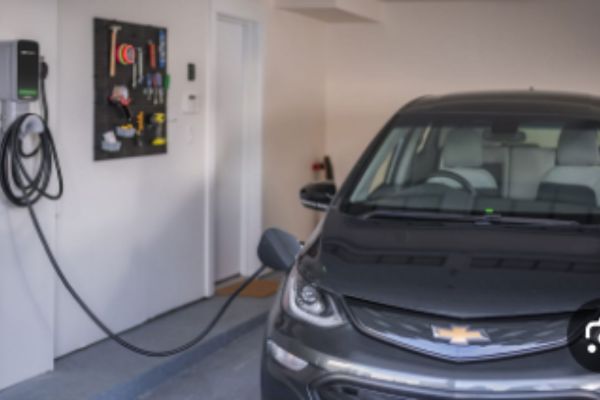
Introduction
With the steady rise in electric vehicle (EV) ownership, the importance of home EV chargers has escalated dramatically. As more consumers make the transition to electric vehicles, the demand for efficient and convenient charging solutions at home has become increasingly paramount. In this article, we’ll delve into the growing importance of home EV chargers and explore the benefits of installing smart EV chargers in residential settings.
Importance of Home EV Chargers
As the automotive industry shifts towards sustainability, electric vehicles have emerged as a prominent solution to reduce carbon emissions and combat climate change. Consequently, the adoption of EVs has been on the rise worldwide, with consumers recognizing the environmental and economic advantages they offer. However, one of the primary concerns for EV owners is the accessibility and convenience of charging infrastructure.
The convenience of charging at home surpasses the availability of public charging stations. Home EV chargers provide EV owners with the flexibility to recharge their vehicles overnight or whenever convenient, eliminating the need for frequent visits to public charging stations. This convenience is particularly appealing for individuals with busy schedules or those living in areas with limited charging infrastructure.
The advantages of smart EV chargers
Smart EV chargers offer a plethora of benefits beyond basic charging capabilities. Advanced features equipped in these intelligent charging solutions optimize the charging process and enhance the user experience. Installing a smart EV charger at home offers several key benefits.
- Remote Monitoring and Control: Smartphone apps or web interfaces enable remote monitoring and control of smart EV chargers. This allows EV owners to check charging status, schedule charging sessions, and even receive notifications when charging is complete, providing peace of mind and flexibility.
- Energy Management: Many smart EV chargers come with energy management capabilities, allowing users to optimize their charging schedules based on electricity rates, grid demand, or renewable energy availability. This helps reduce charging costs and minimize the environmental impact of EV charging by utilizing off-peak hours or renewable energy sources.
- Load Balancing: Smart chargers can intelligently distribute power based on available capacity and prioritize charging based on user preferences or preset conditions. This ensures efficient use of electricity and prevents overloading circuits, particularly in homes with multiple EVs or other high-power appliances.
- Integration with Smart Home Systems: Smart EV chargers can seamlessly integrate with existing smart home ecosystems, allowing for automation and coordination with other devices like solar panels, energy storage systems, and home energy management platforms.
- Data Insights: By generating valuable data insights on charging patterns, energy consumption, and vehicle usage, smart EV chargers can optimize charging strategies, track expenses, and even qualify for incentives or rebates.
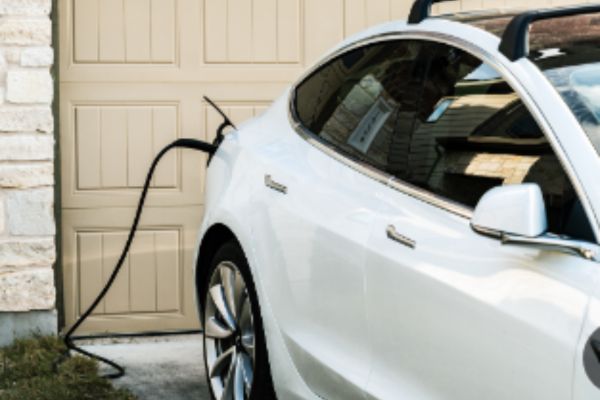
The list of the best home EV chargers for 2024 is available.
Overview of the Top Picks
As the adoption of electric vehicles (EVs) continues to accelerate, the demand for efficient and reliable home EV chargers has grown. In 2024, several top-performing home EV chargers will cater to different needs and budgets. This guide introduces the leading home EV chargers for the year, providing detailed reviews of each option to help you make an informed decision.
Detailed Reviews
The Tesla Universal Wall Connector
Best Overall
Features
- It delivers up to 48 amps of power.
- Compatible with all Tesla models.
- Sleek and durable design.
- Customizable power levels.
- Built-in Wi-Fi for updates and connectivity.
Pros:
- Fast charging speeds.
- Seamless integration with Tesla vehicles.
- High-quality, durable construction.
- Easy installation and setup.
- Attractive design.
Cons:
- Limited compatibility with non-Tesla EVs
- The price point is higher compared to some competitors.
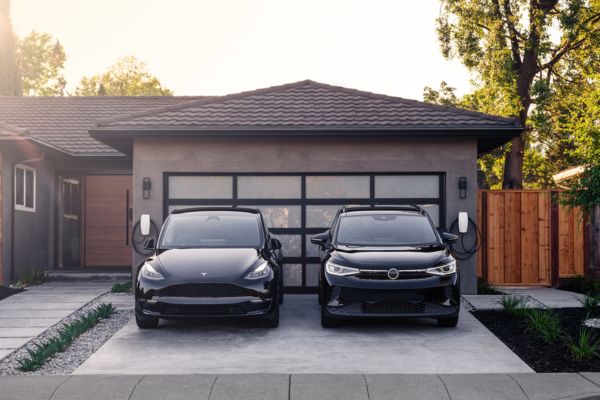
ChargePoint Home Flex
Best Overall Runner-Up
Features:
- You can adjust the power settings up to 50 amps.
- The ChargePoint app provides Wi-Fi connectivity for remote monitoring and control.
- It is compatible with a wide range of EV models.
- Flexible installation options (indoor and outdoor).
- Monitoring and scheduling energy usage.
Pros:
- It is versatile and compatible with many EVs.
- Remote monitoring and control.
- Fast charging capabilities.
- Customizable power output.
- Comprehensive app features.
Cons:
- The design is bulkier compared to some other models.
- The potential need for additional accessories leads to a higher installation cost.
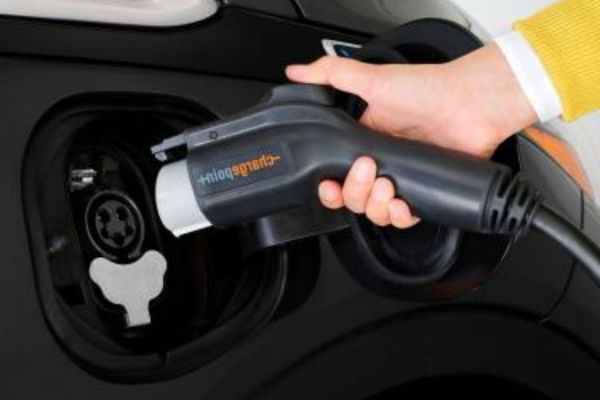
United Chargers Grizzly-E Classic
Best Value
Features:
- It delivers up to 40 amps of power.
- Rugged, weatherproof design suitable for outdoor use.
- Simple, no-frills operation.
- UL Safety certification.
- NEMA 14-50 or hardwired installation options.
Pros:
- Affordable price.
- The product is durable and weatherproof, making it ideal for outdoor installation.
- Fast charging speeds.
- Easy installation.
- Reliable performance.
Cons:
- There are fewer smart features compared to some competitors.
- This product may not be suitable for all EV models.
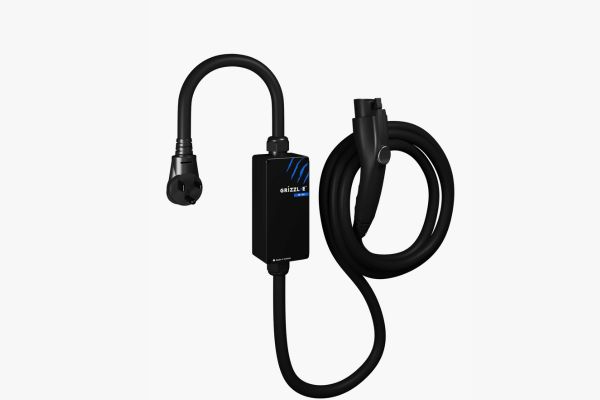
United Chargers Grizzl-E Duo
Best for Dual Charging
Features:
- The device features dual charging ports, each capable of delivering up to 40 amps.
- Rugged, weatherproof design.
- Two vehicles charged simultaneously.
- UL Safety certification.
- NEMA 14-50 or hardwired installation options.
Pros:
- Dual charging capability.
- Durable and weatherproof.
- Fast charging speeds for both ports.
- Ideal for households with multiple EVs.
- Reliable performance.
Cons:
- The price point is higher compared to single-port chargers.
- Limited availability in some regions
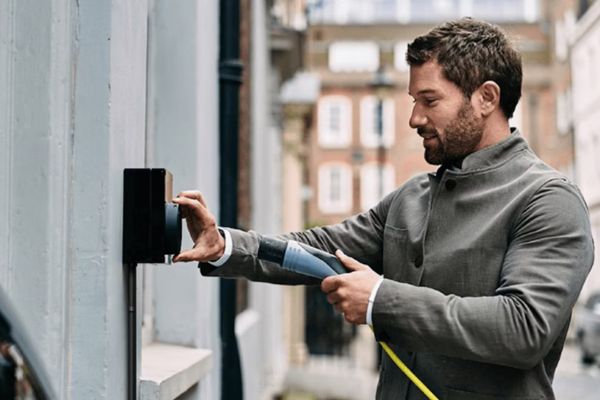
Autel MaxiCharger AC Elite Home 50A
The Best Security Features
Features:
- It delivers up to 50 amps of power.
- We utilize advanced authentication and encryption to improve security.
- The system provides Wi-Fi connectivity for remote monitoring and control.
- It is compatible with a wide range of EV models.
- The smart charging capabilities come with scheduling and energy tracking features.
Pros:
- Enhanced security features.
- Fast charging speeds.
- Comprehensive smart features.
- The app allows for remote monitoring and control.
- Wide compatibility.
Cons:
- The price point is higher compared to some competitors.
- Limited availability in some regions
Lectron V-Box Pro
Features:
- It delivers up to 40 amps of power.
- The operation is simple and reliable, lacking advanced smart features.
- Durable construction.
- NEMA 14-50 or hardwired installation options.
- LED indicator lights show the charging status.
Pros:
- Affordable price.
- Easy to use and reliable.
- Fast charging speeds.
- Durable and well-constructed.
- Simple installation.
Cons:
- Lacks advanced smart features.
- There is no remote monitoring or app connectivity.
Enel X-Way JuiceBox 48
Best for Green Energy Integration
Features
The Enel X Way JuiceBox 48 is a state-of-the-art Level 2 home EV charger designed to integrate seamlessly with renewable energy sources and smart grid systems. This charger offers a variety of advanced features aimed at providing efficient, sustainable, and convenient charging for electric vehicle owners.
- High Power Output: The JuiceBox 48 delivers up to 48 amps of power, allowing for fast and efficient charging of your EV.
- Smart Connectivity: The JuiceBox 48’s Wi-Fi connectivity enables remote control and monitoring via the JuiceNet app. This allows users to schedule charging, track energy usage, and receive notifications.
- Renewable Energy Integration: By integrating the charger with solar panels and other renewable energy sources, you can maximize the use of green energy for charging your EV.
- Durable Design: The JuiceBox 48 boasts a weatherproof and durable enclosure, designed to withstand outdoor conditions.
- JuiceNet Green: This optional service allows users to charge their EVs using 100% renewable energy from the grid when available, further enhancing the environmental benefits of using the JuiceBox 48.
- Voice Control: Compatible with Amazon Alexa and Google Assistant, enabling voice-activated control for added convenience.
- Smart Grid Integration: The charger can respond to utility signals to optimize charging times and balance grid demand, potentially lowering electricity costs.
Pros
- Fast Charging Speed: With up to 48 amps of power, the JuiceBox 48 can significantly reduce charging time compared to lower-power chargers.
- Advanced Energy Management: The ability to integrate with renewable energy sources and smart grid systems helps optimize energy usage and reduce environmental impact.
- Remote Monitoring and Control: The JuiceNet app provides comprehensive control and monitoring capabilities, enhancing user convenience.
- Durable and weatherproof: suitable for both indoor and outdoor installation, ensuring reliable performance in various environments.
- Voice Control Compatibility: Provides hands-free control when integrated with smart home systems.
Cons
- Higher Price Point: The advanced features and high power output come at a premium, making it more expensive than some other Level 2 chargers.
- Additional Setup Required for Renewable Integration: Integrating the charger with solar panels or other renewable energy sources may require additional setup and investment.
- May Require Professional Installation: Due to the high power output and potential complexity of integrating with home energy systems, professional installation is recommended.
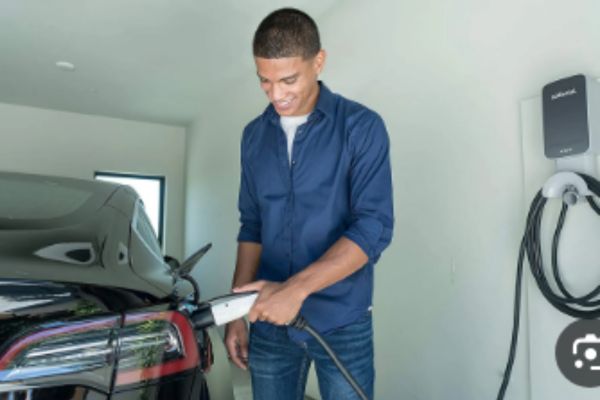
Comparative Analysis
To provide a comprehensive overview, here’s a side-by-side comparison of the top picks based on features, efficiency, and user convenience:
| Charger Model | Features | Efficiency | User Convenience |
| The Tesla Universal Wall Connector | Fast charging, Tesla compatibility | High | Seamless integration with Tesla |
| ChargePoint Home Flex | Adjustable power, Wi-Fi connectivity | High | Remote monitoring via the app. |
| Grizzl-E Classic | Weatherproof, affordable | High | Durable for outdoor use |
| Grizzl-E Duo | Dual ports, simultaneous charging | High | Dual charging capability |
| Autel MaxiCharger AC Elite | Advanced security features | High | Secure authentication |
| Lectron V-Box Pro | Affordable, simple operation | Moderate | Basic functionality |
| JuiceBox 48 | Green energy integration | High | Advanced energy management features |
Understanding EV chargers
What is the best home EV charger for most drivers?
When selecting the best home EV charger for most drivers, several key criteria should be considered:
- Charging Speed: A charger that can deliver sufficient power to recharge the EV quickly is crucial. Level 2 chargers, which provide 240 volts, are generally preferred because they can charge a vehicle much faster than Level 1 chargers.
- Compatibility: The charger should be compatible with a wide range of EV models to ensure versatility, especially if there are plans to switch vehicles in the future.
- Smart Features: Advanced features such as Wi-Fi connectivity, remote monitoring, and scheduling can enhance the user experience by allowing drivers to manage charging more efficiently.
- Durability: A durable, weatherproof design ensures the charger can withstand various environmental conditions, making it suitable for both indoor and outdoor installations.
- Cost: Affordability is a significant factor, as the charger needs to provide good value for its features without being prohibitively expensive.
- Ease of Installation: Chargers that are easy to install and come with clear instructions or support can save time and reduce installation costs.
Benefits of Level 2 Home EV Chargers
Level 2 home EV chargers offer a number of advantages over Level 1 chargers and public charging stations:
Comparison with Level 1 Chargers
- Faster Charging: Level 2 chargers typically deliver power at 240 volts, which significantly reduces charging time compared to the 120 volts of Level 1 chargers. For example, a Level 2 charger can fully charge an EV in 4–8 hours, while a Level 1 charger might take 20–24 hours for the same task.
- Convenience: Level 2 chargers offer overnight charging, ensuring the vehicle is ready to go each morning. This is particularly advantageous for daily commuters.
Comparison with Public Charging Stations
- Availability: Having a Level 2 charger at home eliminates the need to rely on the availability of public charging stations, which can often be occupied or inconveniently located.
- Cost Savings: Charging at home is generally more cost-effective than using public charging stations, especially if you take advantage of off-peak electricity rates.
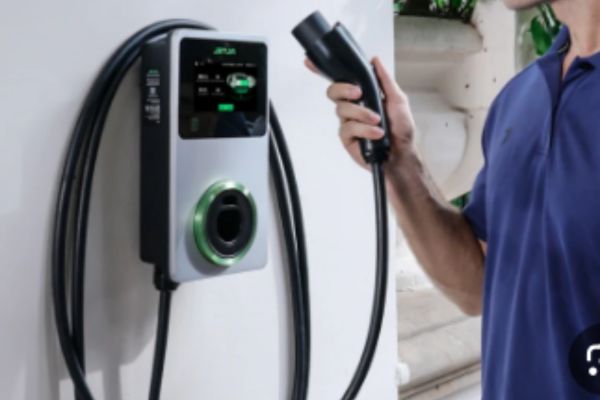
How a Level 2 Charger Can Improve Home Resale Value
Installing a Level 2 charger can enhance your home’s resale value by appealing to potential buyers who own or are considering purchasing an electric vehicle. Key benefits include:
- Attractiveness to Buyers: As EV adoption increases, having a ready-to-use home charging station becomes a desirable feature for eco-conscious buyers.
- Offering modern, sustainable amenities like an EV charger can set your home apart in a competitive real estate market.
- Future-Proofing: Installing a Level 2 charger demonstrates forward-thinking, anticipating the growing trend towards electric vehicles.
How to Prepare for Level 2 Home Charging
Steps for Installation:
- Assess Power Needs: Determine your EV’s power requirements and ensure that your home’s electrical system can support a 240-volt outlet.
- Obtain Permissions: Check local regulations and obtain any necessary permits for installing a high-voltage charger. This might include permissions from your homeowner’s association or local government.
- Hire a Professional Electrician: Employ a licensed electrician to assess your electrical panel and install a dedicated 240-volt circuit. They will ensure the installation meets safety standards and local codes.
- Choose the right location: Select a location that is convenient for both the EV and your home’s electrical setup. The charger should be installed close to where you typically park your vehicle.
- Install the Charger: Once the electrical work is complete, the electrician will install the Level 2 charger. Follow the manufacturer’s instructions to ensure proper setup and functionality.
- Test the charger: After installation, test the charger with your EV to ensure it operates correctly. Confirm that it charges efficiently, and that all smart features (if applicable) are working as expected.
Choosing the right charger
How to Choose a Home EV Charger
To ensure that a home EV charger meets your needs effectively, several key factors should be considered when selecting one:
- EV’s Connection Type:
Connector Compatibility: Ensure the charger you choose is compatible with your EV’s connector type. Most EVs in North America use the SAE J1772 standard for Level 2 charging, while Tesla vehicles use a proprietary connector but come with an adapter for J1772 chargers.
- Charging Speed:
- Power Output: The power output of chargers, typically measured in amps, determines their rating. High-amp chargers (40–50 amps) will charge your vehicle faster than lower-amp models (16–30 amps). To optimize charging times, match the charger’s power output to your EV’s maximum charging capacity.
- Charging Time: Consider how long it takes to charge your EV from empty to full. Level 2 chargers generally provide 10–60 miles of range per hour of charging, depending on the power output.
- Installation Location:
- Indoor vs. Outdoor: Determine whether the charger will be installed indoors or outdoors. If outdoors, ensure the charger is weatherproof and can withstand various environmental conditions.
- Accessibility: Choose a location that is easily accessible and close to where you typically park your vehicle. The cable length should be sufficient to reach your car’s charging port comfortably.

Cost Considerations
Installation Costs
- Electrical Upgrades: Installing a Level 2 charger may require electrical upgrades, such as adding a 240-volt circuit to your home’s electrical panel. This can range from $500 to $2,000, depending on the complexity of the work.
- Professional Installation: Hiring a licensed electrician to install the charger is recommended for safety and compliance with local codes. Installation costs can vary but typically range from $300 to $1,200.
- Permits and Inspections: Check to see if local regulations require permits or inspections for the installation, which could increase the overall cost.
Potential Savings
- Lower Charging Costs: Charging your EV at home is generally more cost-effective than using public charging stations, especially if you can take advantage of off-peak electricity rates.
- Incentives and Rebates: Look for local, state, or federal incentives and rebates that can offset the cost of purchasing and installing a home EV charger. Many utility companies also offer rebates for installing Level 2 chargers.
- Increased Home Value: Installing a home EV charger can enhance your home’s resale value, making it more attractive to potential buyers who own or are considering purchasing an electric vehicle.
The fastest home EV chargers
| Charger Model | Power Output | Charging Speed |
| The Tesla Universal Wall Connector | Up to 48 amps | Provides up to 44 miles of range per hour for Tesla vehicles. |
| ChargePoint Home Flex | Up to 50 amps are adjustable. | Can deliver up to 37 miles of range per hour, depending on the vehicle. |
| Enel X-Way JuiceBox 48 | Up to 48 amps | Offers up to 44 miles of range per hour, with smart features for energy management. |
| Autel MaxiCharger AC Elite Home 50A | Up to 50 amps | It offers rapid charging for a wide range of EV models, with up to 37 miles of range per hour. |
Advanced features and intelligent charging
Smart Features and Connectivity
WiFi Connectivity and App Integration:
- Remote Monitoring and Control: Smart EV chargers with WiFi connectivity allow you to monitor and control your charging sessions remotely through dedicated smartphone apps. This feature provides real-time updates on the charging status, energy consumption, and cost.
- Scheduling: You can set specific charging schedules to take advantage of lower electricity rates during off-peak hours. This not only saves money but also helps reduce the load on the electrical grid.
- Notifications and alerts: Receive notifications about the charging status, completion, or any issues that may arise. This keeps you informed and ensures your EV is ready when you need it.
- Energy Usage Reports: Detailed reports on energy usage can help you track your electricity consumption and costs, enabling better management of your overall energy usage.
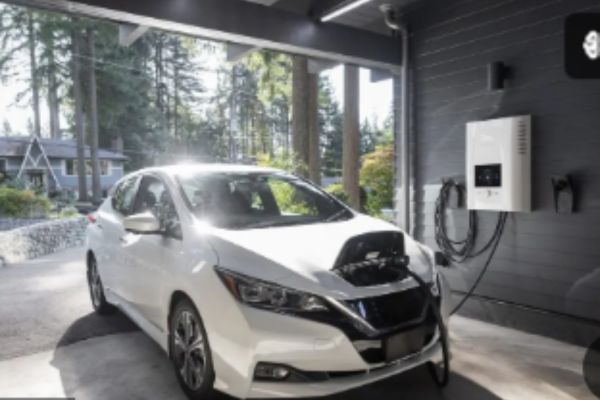
Integration with Home Energy Systems
Home Automation Integration:
- Smart Home Compatibility: Many smart chargers can be integrated with home automation systems like Amazon Alexa, Google Home, and Apple HomeKit. This allows you to use voice commands to control your charger, check its status, and more.
- Load Management: To effectively manage electrical loads, some chargers can communicate with other smart devices in your home. This helps prevent overloading your home’s electrical system by coordinating the use of high-power devices.
Renewable Energy Integration:
- Solar Panel Integration: Smart chargers can be integrated with home solar panel systems to utilize renewable energy for charging your EV. This reduces your carbon footprint and can lower your energy costs.
- Some advanced chargers can work with home energy storage systems (like Tesla Powerwall) to store energy during off-peak times and use it to charge your EV, providing greater energy independence and efficiency.
Security and data protection
Physical security features:
- Robust Construction: Many smart EV chargers are built with durable, weatherproof materials to ensure they can withstand harsh outdoor conditions and tampering.
- Locking Mechanisms: Chargers often come with physical locks or tamper-resistant enclosures to prevent unauthorized access and usage.
Cybersecurity Features:
- Data Encryption: Advanced smart chargers use encryption protocols to secure the data transmitted between the charger, your EV, and your smartphone app. This helps protect sensitive information, such as your usage patterns and personal data.
- User Authentication: Multi-factor authentication (MFA) can be required to access the charger’s settings and controls, adding an extra layer of security against unauthorized access.
- Firmware Updates: The manufacturer provides regular firmware updates to ensure that the charger’s software remains secure against emerging cyber threats. These updates can often be done over-the-air through the charger’s WiFi connection.
- Privacy Controls: Users can control what data is shared with the manufacturer and third parties, ensuring their privacy is maintained.
Installation and maintenance
Installation Options
Professional Installation
- Safety: Professional electricians ensure that the installation complies with local electrical codes and safety standards, reducing the risk of electrical hazards.
- Warranty: To maintain the warranty on an EV charger, many manufacturers require professional installation. This ensures that any issues arising from the installation are covered.
- Reliability: Professionals have the expertise to handle complex installations, ensuring that the charger operates reliably and efficiently.
- Permits and Inspections: Electricians can handle necessary permits and inspections, ensuring that your installation meets all legal requirements.
DIY Installation
- Cost Savings: DIY installation can save money on labor costs. However, it requires a good understanding of electrical systems.
- Flexibility: You can install the charger at your convenience without needing to schedule around a professional’s availability.
- Risk: Incorrect installation can lead to safety hazards, such as electrical fires or electrocution, and may void the warranty.
- Complexity: Installing a Level 2 charger typically requires adding a 240-volt circuit, which can be challenging without proper experience.

Maintenance Tips and Charger Longevity
Maintenance Best Practices
- Regular Inspections: Periodically check the charger and its components for any signs of wear or damage, such as frayed cables, loose connections, or corrosion.
- Cleanliness: Keep the charger and its surroundings clean and free from debris. Dirt and dust can accumulate and affect the charger’s performance.
- Cable Care: Ensure the charging cable is properly stored and not left lying on the ground where it could be damaged or create a tripping hazard.
- Firmware updates: To benefit from the latest features and security improvements provided by the manufacturer, keep the charger’s firmware up-to-date.
Troubleshooting common issues
- No Power: If the charger is not receiving power, check the circuit breaker and ensure it hasn’t tripped. Also, verify that all connections are secure.
- Slow Charging: If the charging speed seems slower than usual, check the power settings on the charger and ensure it’s set to the appropriate level. Also, check the cable for any damage that could affect the power flow.
- Loose connections or a fluctuating power supply can cause intermittent charging. Ensure all connections are tight, and consider having an electrician check your home’s electrical system.
- Error Codes: For guidance on error codes, refer to the charger’s manual. Many smart chargers also provide troubleshooting steps through their apps.
Economic and environmental considerations
Incentives and rebates
Overview of Financial Incentives:
Federal Programs: In the United States, the federal government offers a tax credit for the purchase and installation of EV chargers. The credit can cover up to 30% of the cost, with a maximum credit amount typically around $1,000 for residential installations.
State Programs: Many states offer additional incentives, such as rebates, grants, or tax credits. The specifics vary by state, but programs often cover a significant portion of the installation costs. For example, California’s Clean Vehicle Rebate Project (CVRP) provides rebates for both EV purchases and home charging stations.
Utility Company Programs: Some utility companies offer rebates or reduced rates for installing home EV chargers. These programs aim to encourage EV adoption and can significantly reduce both the upfront and ongoing costs of home charging.
Local Incentives: Certain cities and municipalities may offer additional incentives, including free or subsidized installation services, especially in areas focused on reducing carbon emissions and promoting clean energy.
Environmental Impact of Home Charging
Environmental Benefits
- Reduced Emissions: Charging an electric vehicle (EV) at home typically results in lower greenhouse gas emissions compared to using gasoline or diesel vehicles. This is especially true if the home charger uses renewable energy sources like solar or wind power.
- Due to reduced energy losses during transmission, home charging tends to be more energy-efficient than public charging stations. Additionally, Level 2 home chargers are generally more efficient than Level 1 chargers, providing faster charging times with less energy waste.
- Renewable Energy Integration: Home EV chargers can be integrated with renewable energy systems, such as rooftop solar panels. This allows EV owners to charge their vehicles using clean, renewable energy, further reducing their carbon footprint. Smart chargers can also schedule charging times to coincide with periods of high renewable energy availability on the grid.
- Load Management: Smart home chargers can help manage the load on the electrical grid by charging during off-peak hours when demand is lower. This can lead to a more stable and efficient grid, reducing the need for additional power plants and the associated environmental impacts.
Additional Considerations
- Battery Recycling: While EVs have environmental advantages, it’s important to consider the vehicle’s lifecycle impact, including battery production and recycling. Efforts to improve battery recycling technologies and practices are ongoing and help mitigate environmental concerns.
- Lifecycle Analysis: Overall, the lifecycle analysis of EVs, from production to disposal, shows a significant reduction in greenhouse gas emissions compared to conventional vehicles. Home charging contributes to this positive impact, especially when combined with renewable energy.
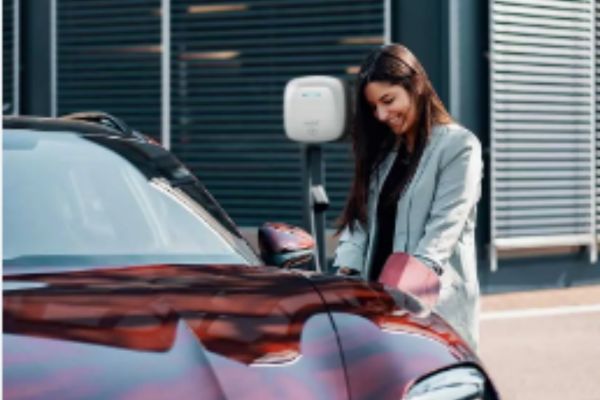
Conclusion
The transition to electric vehicles (EVs) is a crucial step toward reducing carbon emissions and promoting sustainable transportation. As EV ownership increases, the importance of home charging solutions becomes more evident. Home EV chargers not only offer convenience but also enhance the overall EV experience by providing faster, more efficient charging compared to standard Level 1 chargers.
Key Points Summary:
- Home EV Chargers: A variety of options are available, catering to different needs, budgets, and vehicle types. Level 2 chargers are particularly beneficial as they offer faster charging speeds, making them more suitable for daily use.
- Economic Benefits: There are numerous incentives available, including federal and state tax credits, rebates from local governments, and rebates from utility companies that make the installation of home EV chargers more affordable.
- Environmental Impact: Charging at home, especially when integrated with renewable energy sources, significantly reduces the carbon footprint of vehicle charging and supports broader goals of energy sustainability.
- Smart Features and Security: Modern home chargers come equipped with smart technology for remote monitoring and control, enhancing convenience and efficiency. Additionally, advanced security features protect users against cyber threats.
Final Recommendation:
For most EV owners, investing in a Level 2 home charging station is advisable. It is cost-effective in the long run, especially when taking advantage of available financial incentives. For those concerned about environmental impact, selecting a charger that can integrate with renewable energy sources or one that features high energy efficiency would be beneficial.
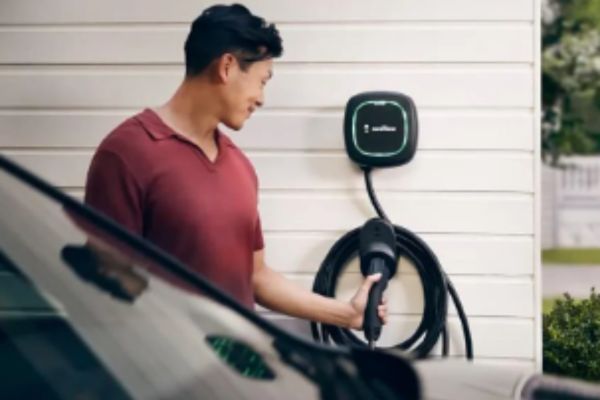
FAQs and Expert Insights
How do I choose the right EV charger for my home?
Consider your vehicle’s requirements, the desired charging speed, and the installation space. Also, consider whether you’ll need a portable charger or one with advanced smart features for integration with home automation systems.
Are there significant differences between brands of home EV chargers?
Yes, differences can include charging speed, durability, smart features, compatibility with various vehicles, and the ability to withstand environmental conditions.
What should I know about EV home charger installation?
Professional installation is recommended, especially for high-powered chargers. Ensure that your home’s electrical system can handle the additional load. Check the local regulations and the potential need for permits.
Can I use solar power to charge my EV at home?
Absolutely. Many home chargers can be directly connected to a home solar panel system, providing a very sustainable charging solution.
Expert Insight:
Dr. Emily Norton, Renewable Energy Specialist: “Integrating home EV chargers with renewable energy not only reduces reliance on non-renewable power but also maximizes the environmental benefits of driving an EV. “Planning charger usage during low-demand times can also alleviate grid stress.”

Henry Michael is a leading expert in EV charging station research, specializing in innovative solutions for electric vehicle infrastructure. With a passion for sustainability and technological advancement, he is dedicated to advancing the accessibility and efficiency of EV charging worldwide.

